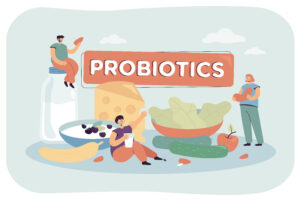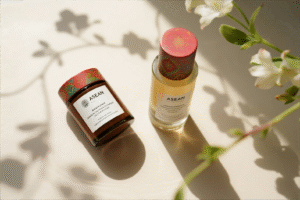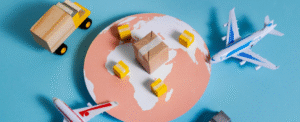+86 571 8659 2517
+86 180 5841 8258
info@zmuni.com

Nicotinamide mononucleotide (NMN) has long attracted global attention as a promising ingredient in health supplements and functional foods, due to its potential role in supporting cellular metabolism, healthy aging, and overall well-being. In recent weeks, key regulatory developments driving in major markets have brought clarity to NMN's legal status, creating new opportunities for the supplement industry. United States: FDA Restores NMN's Dietary Supplement Status On December 9, 2025, the U.S. Food and Drug Administration (FDA) published a response letter on Regulations.gov, addressing submissions by Chinese company SyncoZymes (Shanghai) Co., Ltd. regarding β-nicotinamide mononucleotide (NMN). *Image source: Regulations.gov The

The global online cosmetics market is estimated at USD 22.02 billion in 2025 and is expected to reach USD 30.81 billion by 2030, growing at a CAGR of 6.95%. Asia-Pacific is the fastest-growing region, while North America remains the largest market. Most online sales occur through third-party retailer platforms (95% in 2024), though company-owned platforms are also expanding. This growth is fueled by personalization, virtual try-ons, convenience, social media influence, and rising demand for premium and organic products. Given this rapid expansion, understanding and navigating the regulatory landscape is crucial for brands seeking to sell cosmetics internationally. This article provides a

Earlier this year, the Shanghai Medical Products Administration fined a foreign cosmetic registrant whose designated Domestic Responsible Person (DRP) failed to assist in adverse event monitoring and product recalls. This case highlights a crucial reality for overseas brands entering China: the China RP is not just a formal contact — it is the legal "first responder" for compliance and product safety, bearing direct administrative liability under Chinese law. Understanding the obligations and risks associated with this role is essential for any foreign brand seeking a smooth and compliant entry into the Chinese market. What Is a "Domestic Responsible Person" in China?

Global Cruelty-Free Trend and China's Regulatory Evolution The cruelty-free movement has been shaping the cosmetics industry worldwide for decades. Regions such as the EU and Canada have fully banned animal testing for cosmetics, while several US states have introduced similar prohibitions. In 2025, Brazil also announced a comprehensive ban, reflecting growing global momentum toward ethical, cruelty-free innovation and rising consumer demand for animal-friendly products. Historically, China required animal testing for imported cosmetics, which deterred many overseas brands from entering its large market. However, China has been actively aligning with international standards. On September 19, 2025, the National Medical Products

Probiotics are a well-established segment in the global health and nutrition market, widely used in supplements, functional foods, beverages, and snacks. Overseas markets such as Europe, the United States, Japan, and South Korea have long recognized the health benefits of probiotics, with consumers seeking gut health, immune support, and other functional benefits. This article gives an overview of the probiotic market and its compliance requirements in China. 01 China's Rapidly Growing Probiotic Market In recent years, China's probiotic market has also experienced rapid growth. Although the industry started relatively late — in the late 1990s — strong policy support, growing

The European Union has a well-established and stringent regulatory framework for cosmetics, with clear and detailed requirements regarding ingredient safety, labeling compliance, and market access. As one of the world's key export markets for cosmetics, the EU attracts significant international trade. However, companies that are not fully familiar with EU regulations on cosmetic substances may face serious risks, including product detention, import refusal, or recalls. This article provides a concise overview of the EU's List of Substances Prohibited in Cosmetic Products, designed to help businesses proactively ensure compliance, avoid the use of banned ingredients, and reduce the risk of

ASEAN's cosmetics market is rapidly growing, making it an increasingly important region for global brands. Regulatory frameworks are evolving alongside market demands, with ingredient restrictions being a critical compliance focus for regulators across member countries. This article provides a clear overview of the ASEAN Prohibited Cosmetic Ingredients List (Annex II Part 1), outlines key categories of prohibited substances, and highlights important considerations for companies referencing the list. 1. What is the ASEAN Prohibited Cosmetic Ingredients List? The ASEAN Prohibited Cosmetic Ingredients List corresponds to Annex II Part 1: List of Substances Which Must Not Form Part of the Composition of Cosmetic

01 Heightened Scrutiny on Popular Functional Ingredients Recent industry reports in China suggest that China Customs is increasing regulatory checks on 12 commonly used ingredients in health and wellness products: Artemisia argyi, Ergothioneine, Polypodium leucotomos extract, NMN, Quercetin, Saw Palmetto, Ashwagandha, Epilobium parviflorum, Erythrina mulungu, Damiana, Berberis aristata, and NAD+. Importers are now required to demonstrate that these ingredients comply with regulations in their country of origin and to provide supporting documentation to Chinese authorities. This isn't entirely new. In 2024, similar compliance requirements were applied to ingredients such as Coenzyme Q10, Chamomile, N-Acetylcysteine (NAC), Glutathione, Resveratrol, and others.
+86 571 8659 2517
+86 180 5841 8258
info@zmuni.com